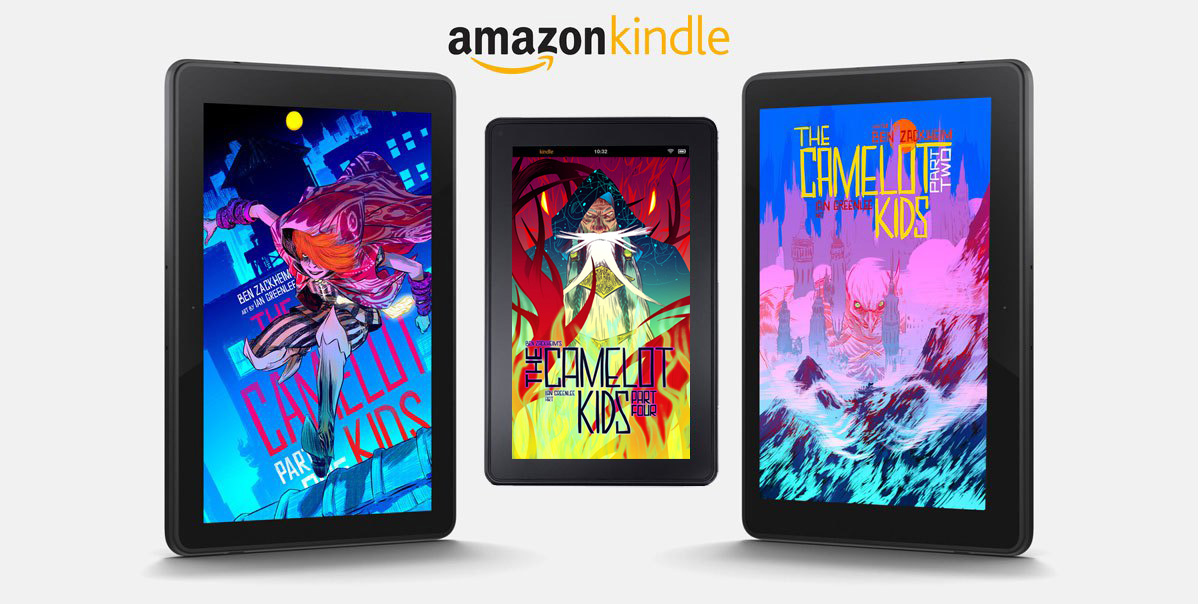
by Ben Zackheim | Feb 19, 2014 | Book Promotion, Writing |
A step-by-step guide, with best practices!
Yup. Blog posts about Amazon KDP Select free promo days are as common as bad drivers on I84.
But I want to do something a little different here. I want to lay out steps and include details about why they are important. I’ll also give you a basic overview of boosting posts on Facebook. These days it’s best to spend five bucks to get the word out.
Once you sign up for KDP Select and figure out what you can do with your exclusive Amazon ebook, you may find a small bump in the road. Actually it may look more like a big, honking wall. The wall is spray painted with large words…
“Now what?”
Here’s what.
1) Decide why you’re doing the KDP Select free promotion days. Don’t just do it to see what happens. I can tell you what happens. Lots of people download your book and add it to their vast library. That plus $17 will buy you a coffee.
Here are some great reasons to do a free giveaway that will actually add some momentum to your efforts:
-
You want the reader to buy the next book in the series. Provide a sample of the next book in the back of the book you’ll be promoting. Provide a link to buy the next book too. If you haven’t done this already, it’s a good idea.
-
You want the reader to buy another book you wrote that is not in the series. Same as above.
-
You want newsletter sign-ups. Definitely recommended if you don’t have any other books available to buy, because this way you minimize the risk of losing them before your next book comes out. People forget things. Even authors they enjoy.
-
You want reviews. Make a level-headed case at the back of the book for writing a review. I lifted my copy from David Gaughran:
“Word-of-mouth is crucial for any author to succeed. If you enjoyed the book, please leave a review on Amazon. Even if it’s just a sentence or two. It would make all the difference and would be very much appreciated: [link to book on Amazon]”
For your first promo I don’t believe you should shoot for more than one of the above goals. Why? It’s hard enough to track progress on one front, much less several. You can always adjust your tactics for the next free promo.
Once you’ve chosen your general goal, choose a specific one. Are you going for sales of the next book in the series? Great! How many do you want to sell? Just guess. Set a goal and be ready for failure or success. Both can be daunting, but it’s essential to measuring the success of your effort.
2) Decide how many days you want the free promo to run. I suggest a minimum of two. This way you can spot whether downloads are accelerating over a substantial period of time (implying a hunger for your book and/or wise choices on the marketing front) or not (implying you’ve missed the mark on marketing).
My opinion is that five days is too long. Especially if this is your only book. Why is that? Because free promo days are a great way to get people to give you a try. If you don’t have another book to sell them then you’ve lost them.
Also, five days is too long because you don’t want everyone who WOULD download your book to see it and download it. You want to leave some room for word of mouth to set in. The longer you keep the book free, the more likely you are to exhaust your potential audience in one go. Now, if you want to just get maximum exposure then five days is an option. Just don’t expect too many sales after the five days is over. You’ve gotten on their Kindle, and now you have to hope they convert to other books in the series or other titles you’ve written.
3) Buy one guaranteed spot. If you can avoid it, do not choose a date for the promo days first. Please. Choosing the date first means you’re setting something in stone before you know the availability of your marketing options (i.e. Bookbub, Bookgoodies, etc.)
So first, choose one of these sites to buy a guaranteed spot.
Bookbub
Booksends (formerly Bookblast)
Free Kindle Books and Tips
BookGoodies
AskDavid
Manybooks
These are the top-notch options for your free day advertising. Choose one, secure a date, and then choose more from this category if you can afford it, and if they can accommodate your dates. Bookbub is tough to get on. They may turn down your money. But one or two of these sites will be happy to take that heavy dough off your hands. I’ve had an especially impressive result from Manybooks. Shirley Link & The Safe Case hit the top 500 Free list on Amazon and it took four days to settle down. Highly recommended.
4) Make a list of friends you can count on to share and bug ’em. Prep an email to them. You’ll send it out a day or two before the promo.
Dear friends!
I apologize for the group email but I want to reach as many people as possible for this. I’ll be giving my ebook [book name] away for FREE on [date]! Why free? It’s a limited time deal on Amazon that will expand my readership and give me a chance to find some new fans.
I could use your help on the promo day. Please keep an eye on [Facebook, Twitter]. When you see my announcement, please Like and Share. The sharing part is important since it will help more people see the deal.
That’s it! I appreciate any help you can provide to get the word out. I’ll let you know how it goes!
Sincerely,
5) Tell the following sites about your KDP Select free promotion days. Be sure to track who you’ve told in your app of choice. I use my Google Docs marketing journal (which I’ll write about one day)
Best websites for marketing your Amazon KDP Select free days
You can also use the Author Marketing Club tool to submit. The tool is a little wonky but it works.
6) Now head in and set your free days on Amazon’s KDP Select site.
7) Now go to your social networks of choice.
Twitter. If you have a Twitter Ads account then you can schedule tweets to go out whenever you want. If you don’t have a Twitter Ads account, it’s worth it. It’s free and gives you incredible stats and some useful features. Sign up for Twitter Ads here. (it’s a Twitter-owned service) Some people use Hootsuite or Buffer to queue up their tweets for later. Both are excellent options. Set up seven tweets per day of your promo. Don’t make them all sales pitches. Make them intriguing.
-
Write a riddle.
-
Include an excerpt.
-
Ask a compelling question that your book answers (fiction or non-fiction).
-
Include pics (cover, interiors).
-
Include vids.
-
Include every media you have for your book!
I recommend you buy some ads on Twitter Ads to get the word out. But wait until the next promo. For your first promo, give Facebook some hard-earned cash. They’re getting good at delivering readers to me.
Facebook. Do two posts for each day of the promo. Again, set these posts up ahead of time. You should consider boosting your posts with a $5 spend. It increases awareness of your promo. Just make sure you target correctly and set the post date for the promo date. How do you do that? It’s easy.
Draft your post (please include an image of the book cover to make the post appear nice).
Then click on the Boost Post button at the bottom of the post window.
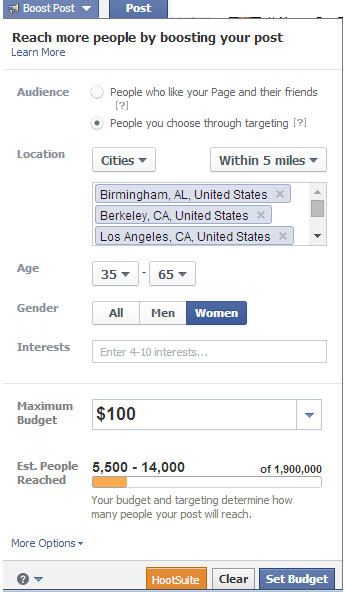
Notice the elegant layout. Amazing how Facebook can make great interfaces when money’s involved, huh?
NOTE: Facebook changes their design all the time. The boosting process will always be similar, though.
Just select “People you choose through targeting” to get the range of options you’ll need. Then fill out information that you think appeals to your target audience. The Interests window is especially important. Put words in there that relate to your genre and book. So if you wrote a book inspired by “It” you could enter “horror, stephen king, violent, scary clowns, it.” Yes, you can get as specific as you’d like. The more specific, the better. With these data in place a whole slew of people who are interested in King, It, and scary clowns will get your ad served to their page.
Some people don’t get great results with Boosts and prefer running Facebook ads. These show up as promoted posts in the feeds of people who you target. The process of setting up an ad is more complex, but you can get the lowdown on how to do it here. If you want to take a course in Facebook ads, sign up for this course.
Pinterest. Post your cover art, interior art and marketing images. The copy should tout the free promo days.
7.1) Add a keyword. Thanks to Julia Derek in the comments section, you get this excellent tip. A couple of days before the promo, head into KDP and add the term “free ebook” to the book’s keywords. It will take several hours to a couple of days to go live. This should help people find you if they’re looking for free ebooks. Don’t forget to remove the keyword term after the promo is over, though.
8) On the first morning of your KDP Select free promotion days, monitor! Go to your marketing journal and see which sites you informed of the free days. Did they post the promo? Not all of them will. Be aware that some sites will post at the end of your day (it’s a big world!) Take note of which ones posted. You’ll want to have that list handy for the next promo.
Go to the site(s) where you paid for promotion and make sure you got what you paid for.
Post the deal to these promotional sites. They only accept additions on the day of the promo.
Addicted to eBooks
Snicks List
Send out an email to your friends, reminding them and offering some new details/news that will make the email worth a read.
Hi all!
As I mentioned, my ebook is free for today on Amazon! Please share the post on your timeline. If you don’t see it, here’s the url.
[insert url for shared post, tweet, etc.]
Thanks so much! I checked my dashboard and have [number] downloads so far. So excited.
Sincerely,
If you’re happy with the results you can post about your success on social networks. It might be nice to send a final email with the good news if you feel like that’s a good idea.
And, of course, head to Amazon KDP to check on the progress. Watch the downloads roll in! It’s fun. Don’t forget to eat.
9) If downloads accelerate on day two, consider adding another day to your promo. Increased interest in your book over a 48 hour period may be a sign that you’ve broken through to a larger audience than your genre warrants. In other words you may have broken into Amazon’s “mainstream” a little bit. If this happens then adding a day will allow for you to capture a much wider audience. Ideally, you’ll go back to charging for the book right when the interest peaks. This way you’ll pick up sales from people who were interested enough to pay for your book.
10) Was it a success? You should keep promoting for a few days after the promo is over. Tout your rise in the rankings, new reviews or whatever stands out as a positive result. But also evaluate the performance of your campaign. Remember how you set a specific goal for your promo? Did you meet it? Exceed it? Give the readers a couple of weeks to show their intent. It takes a while to read a book for some of us!
Take a realistic look at your results. Gauge what went right and wrong with the promo (you will see what worked and what failed). Write these down. Don’t assume you’ll remember because you might not, which means you learned nothing. With all this data, draft a plan for the next promo. And congratulations! You’re on the road to getting much better and being more comfy with marketing! No small task, friends.
Let me know how your promo goes.
[jetpack_subscription_form]
You may also like:
Amazon has a bridge to sell ya!
The $1.1 Million question: Is KDP Select worth it?
by Ben Zackheim
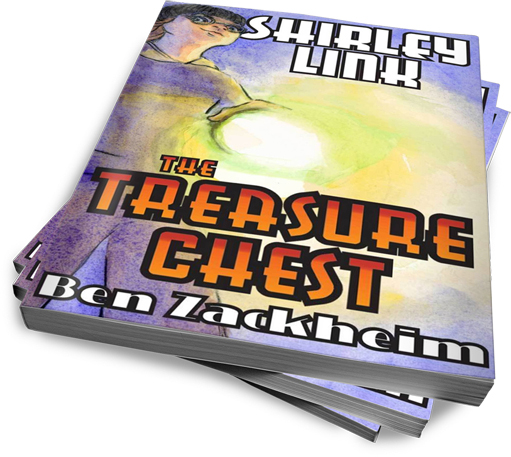
by Ben Zackheim | Feb 12, 2014 | Writing |
I’m like billions of people
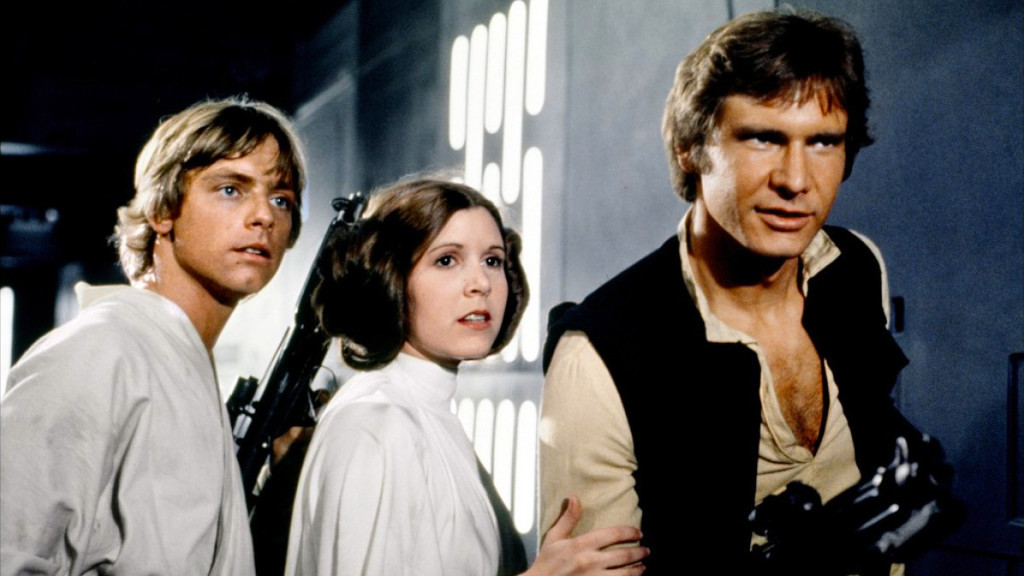
I love Star Wars
[divider divider_type=”gradient”][/divider]
I’m like millions of people
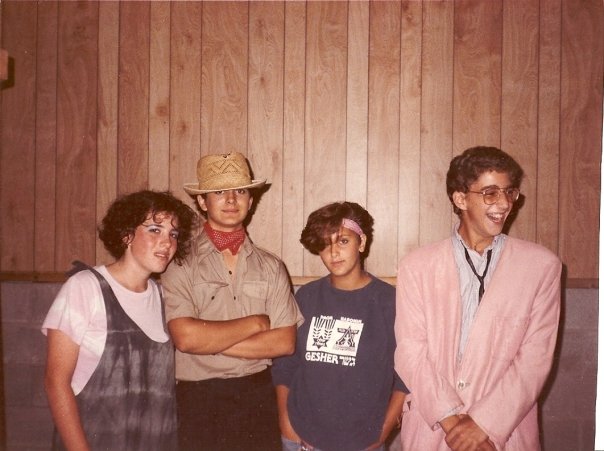
I loved my teens – heartbreaks, embarrassments, and all!
[divider divider_type=”gradient”][/divider]
I’m like thousands of people

My first memory is of a hide and seek game
[divider divider_type=”gradient”][/divider]
I’m like hundreds of people
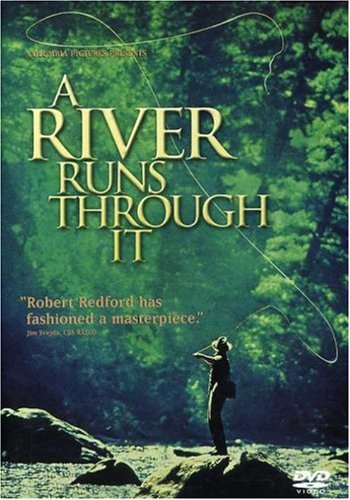
I got to work on two Robert Redford movies
[divider divider_type=”gradient”][/divider]
I’m like dozens of people

I live on Hidden Ledge Drive
[divider divider_type=”gradient”][/divider]
I’m like no one else
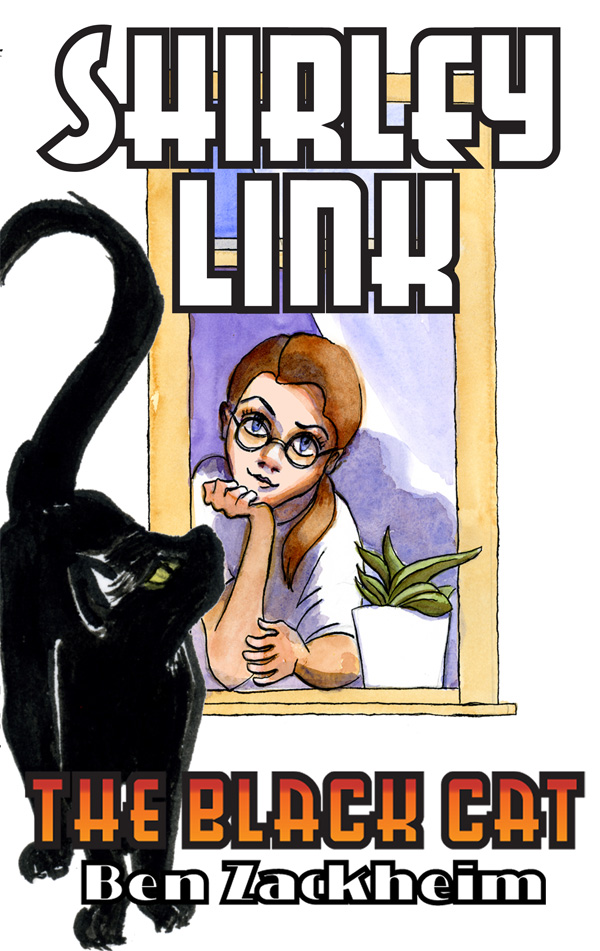
I write the Shirley Link mystery series
[divider divider_type=”gradient”][/divider]
I’m not even me

When I write
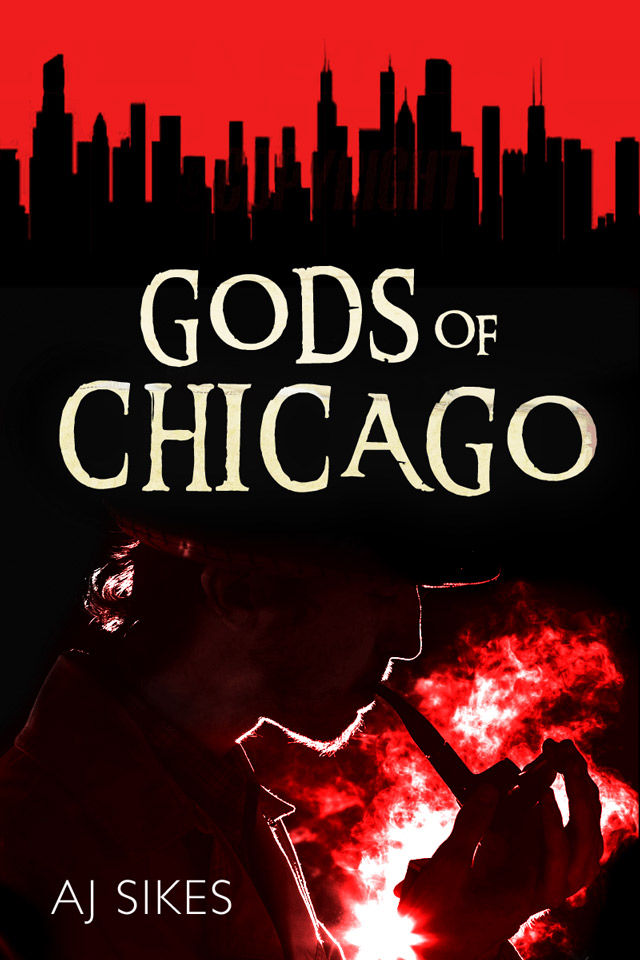
by Ben Zackheim | Feb 11, 2014 | Writing |
Ever thought about serializing your novel, or writing a serial from scratch? Yeah, me too. I’d like to welcome AJ Sikes to the blog with his post on serialization.
Enjoy, and please let us know your take on serialized stories.
Here’s Mr. Sikes!
Hello Everyone!

Many thanks, first of all, to Ben for offering a guest spot on his blog. This marks the second post of my tour promoting Gods of Chicago, a noir urban fantasy that was released in serial format and will soon be available in omnibus and POD editions (release date Feb. 14th!) My first post on this tour was at Zoë Markham’s blog where I talked about the decision to go serial.
Getting down to brass tacks, Ben thought my experience in writing and publishing a serial would be of interest and help to his readers, hence the title of this post. A bit of what I’ll say here is an echo of comments I made on his blog last Monday. But I also share some thoughts on how the serial process can help newer writers test the waters, and especially as regards independent publishing (self and small press).
Lesson One: Write the whole story first.
1. You can put just the first episode out or launch episode 1 and 2 simultaneously, which is what I did. This lets readers get a taste of your writing on the cheap (each episode is just $0.99), and without too much investment of time (each episode comes in at around 15K-20K words, a good read-before-the-lights-go-off chunk of story). Isn’t the point of a serial that it be written in segments? Well, yes. Back when Dickens was doing it, that is how it worked. Edgar Rice Burroughs’ experience with serialization is closer to what I did with Gods of Chicago. Having a full novel ready to go before launching a serial provides a two-fold benefit.
⁃ Based on feedback from your early readers, you may find you need to put the episodes out more quickly than you’d planned.
⁃ Also, serial stories aren’t all the rage these days (though they’re gaining popularity). Readers seem more comfortable getting a story all in one go. For my future efforts, I’ll be doing the full season release, which is what other serial authors seem to be doing now.
2. With the full novel in hand, you lighten the workload when publishing. You’ll tackle all the formatting at once, if you’re doing it yourself. If you’re using a professional formatting service (highly recommended!), they’ll appreciate getting the entire project in one delivery.
⁃ Come publication time, you’ll appreciate having all your ducks in a row.
I had the benefit of working with a publisher who handled cover design, formatting, and uploading of each episode. If you can secure such an arrangement, you should. Unless you’re the kind of person who has access to and can use all the software necessary.
One caveat here: Be wary of sites offering “assisted self-publishing” as these may, in fact, be vanity presses in sheep’s clothing. If you’re paying a publisher for a service, and that publisher is also asking for rights and a share of the royalties, you may want to reconsider signing the contract. Writer Beware is a great resource for new writers looking to avoid pitfalls in publishing. The site is maintained and geared toward the genre fiction community, but writers of any stripe can benefit from a quick read through the archives.

Lesson Two: Invent a time machine so you can read Ben’s blog on KDP Select before you publish
Seriously. ICYMI, Ben did a fantastic two-part blog on the benefits to be had by signing up with Amazon’s KDPS program. Part 2 is here.
I’m a big fan of the transparency among members in the independent author community. Hugh Howey and Joe Konrath in particular have been incredible about sharing the behind-the-scenes details that most authors could only hope to guess at. Even as recently as two years ago. So, I’m happy to share what I’ve learned through my sales, meager though they are.
Kindle users account for the majority of my sales. Month of January sales total 18, split evenly between Amazon.com and Amazon.co.uk, with only episodes 1-3 purchased. Month of February sales total 6 so far, solely from the UK site, with one sale of each episode 1-5.
I’ve sold a total of 3 copies through Kobo. Zilch on B&N and iTunes.
Now, a lot (all) of these abysmally low figures are due to my lack of a significant marketing push, which was, to some extent, intentional. I made announcements in the forums and Goodreads groups I frequent. I talked to potential readers, and I made some noise on Twitter (and thanked every last person who helped boost my signal). But I didn’t advertise or try to flood the airwaves with news about my book.
The goal with the serial was to attract a few early readers and begin building another piece on the platform around my book. I’ve been active online and within the writing community for about two years. I’ve got a personal website for my editing services, which includes a page devoted to my writing. So my efforts at building an author’s platform weren’t restricted to the serial release, and that’s an important point for new authors to consider. It’s what we hear so often…the real work begins after the book is published.
Contrasted with the serial release, for the omnibus/POD release I’m tracking down advertising channels, doing a blog tour (Thanks again, Ben and Zoë!), and plan to use Amazon’s machine to do a lot of the marketing for me through KDPS. I also expect to have monthly deals to plan for, and special promotions to run.
That’s a wrap here. I’m lining up stops on the tour through the month. If any writer- readers would like to host me, I’ll happily provide an edit of your first chapter (up to 5K words) in exchange. The only date I have set is February 24th, where I’ll talk about self-editing tips over at mystery writer Elizabeth Spann Craig’s blog.
If any readers have experience with serial publishing, what did you learn?
BIO:
Aaron Sikes (writing as AJ Sikes) is a writer of weird noir fiction and a freelance editor serving the community of independent authors. His stories have been published by Xchyler Publishing, KnightWatch Press, and Fox Spirit Books. Follow him @SikesAaron and sign up for the Gods of Chicago newsletter to get the latest updates on Mitchell Brand’s adventures and story world extras. If you need editing assistance with your manuscript, please stop by his website.
You might like these posts:
WordPress for writers and authors
Top 5 writing contests
Why you should run a Goodreads contest
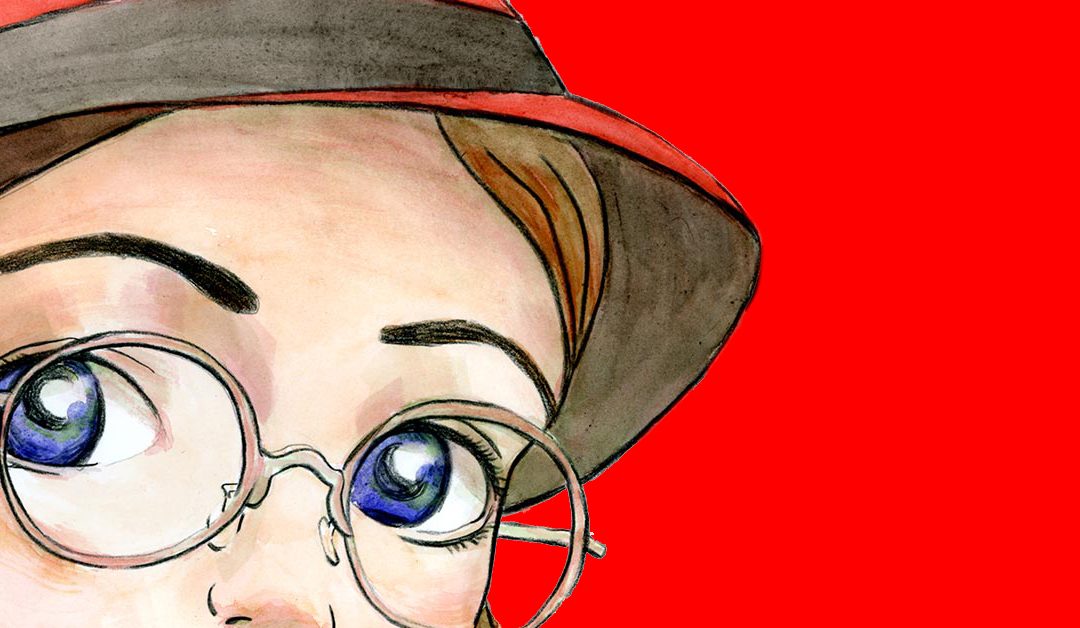
by Ben Zackheim | Jan 15, 2014 | Writing |

Creating a book cover is a bit like mixing potions. There are definitely tried-and-true characteristics of a good cover, but there are also a thousand different types of covers that look great.
And, of course, a million ways to create a book cover that looks awful.
How does Robin Hoffman manage to make such great covers for the Shirley link series? It starts with her love of the character, which has been clear since she read the first draft of the first book in the middle school reading series, Shirley Link & The Safe Case. But, really, it all comes from her working her butt off!
Here’s a peek into the process she goes through every single time a new Shirley cover is needed. Creating a book cover ain’t easy. But it sure is fun to watch happen. Step-by-step.
Click on the images to see ’em get blown up!
-

-
You can see Robin playing around with the relationship between Shirley and the black cat here. I love the way you can immediately see their connection just in their poses.
-

-
The playfulness continues! Robin is trying to find a way to show a bunch of information on a cover, including humor, relationship and easy-to-read symmetry
-

-
Here you can see her working with the question mark motif. As usual, she’s found the right symbol to focus on for the cover. No one gets Shirley like Robin!
-

-
Still working on angles and that magic moment where cat and detective bond.
-

-
Color! Just to shake things up…
-

-
Notice how the strongest sketch is the one that ended up being closest to the final cover. Amazing how a good artist can just tell when she’s hit it on the head (whether she knows it, or not)
-

-
Again, the question mark motif where the tail reflects the story’s mystery along with the personality of the cat! Love this.
-

-
Playing with symmetry again. Robin will do anything to capture the right framing for a moment.
-

-
The final cover is coming together, but not before Robin tries out some more angles.
-

-
A little more detail. While I love this one, there’s not enough connection between Shirley and the cat.
-

-
Ooooo, very close to the final.
-

-
I love this one but the cat would have been tough to read on small screens.
-

-
Cat on one side…
-

-
Cat on the other side!
-

-
Working out placement now that the angle is clear.
-

-
Pre-final sketch.
-

-
Character study with Bad Kitty!
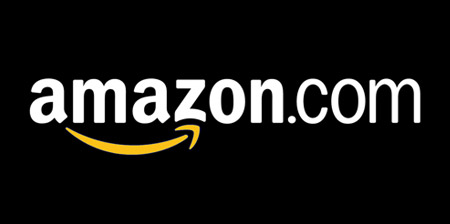
by Ben Zackheim | Jan 11, 2014 | Book Promotion, Writing |
Amazon recommended books are getting an upgrade (or a downgrade, depending on your point of view). I was browsing my books’ pages this morning when I saw a little pop up window appear on Shirley Link & The Safe Case‘s product page.
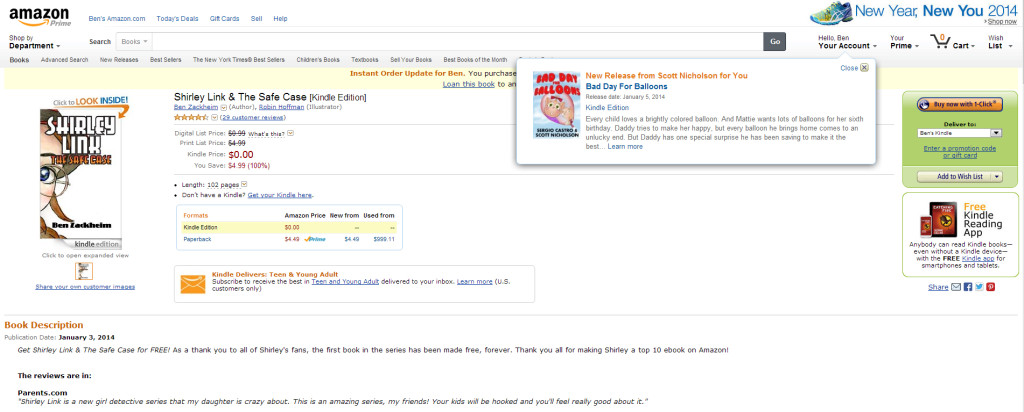
See that window dropping down from the upper right portion of the screen? It’s certainly in your face. At first I thought it might be a recommendation based on an author I follow on Amazon. But I don’t subscribe to his updates.
(Quick aside: Yes, you can follow authors and receive updates about their latest releases. Just visit their author page and look for the “Stay up to date” section on the right side of the page.)
I wonder if it’s a new feature to show Amazon recommended books to readers, or just a trial balloon. Amazon is known for trying new stuff all the time. I hope it’s widespread. And, uh, I hope I can find a way to take advantage of it with my books.
Have you seen this Amazon recommended books feature before?
If yes, how long ago? Do you like it, or is it too aggressive? Let us know in the comments.

by Ben Zackheim | Jan 10, 2014 | Book Promotion, Writing |
If someone tells you, “I have a bridge to sell ya!”, would you believe them? Of course not!
But what if the mayor of New York City was the one talking? That makes it a tougher question. It’s conceivable that he could sell it to you. He’s the mayor! But wouldn’t he have to massage the bureaucratic engine of the city to make the sale happen? Isn’t he just one powerful person in a city of powerful people?
That’s the conundrum we find ourselves in with Amazon. They actually do have a bridge (to success) to sell us, and they could indeed sell it to us.
But will they do any of the hard work required to make the sale?
Does Amazon KDP work hard enough to justify your exclusivity?
As I mentioned in the last post in this series on KDP, there are over 20 million Amazon Prime members who can check out your book for free. Amazon has a big stake in showing those millions of people all of the amazing benefits they get for their $89 membership fee. One of those benefits is your KDP Select book! But to finish my point about the promotional possibilities, there’s just no way to tell when/where/whether your book will get a spotlight of any kind. Amazon has many ways to highlight books. Recommendations, newsletters, lists, you name it. But Amazon is also a long tail company, meaning they’ll only give real love to the top 20% of products in any category, leaving the 80% who don’t hit their proprietary criteria to fend for themselves.
It’s one thing to say you have the bridge, it’s quite another to say, I’ll walk you through the sale. Just like the mayor of New York doesn’t really know how to make the sale happen, Amazon can’t promise that KDP Select will be a bridge to success. But they want you to think it can.

Remember that scene in Jaws, when the captain gets a peek at the shark for the first time?
“We’re gonna need a bigger boat,” he says, while watching the death of him swim away.
The way I see the bookselling world is as follows:
“We’re going to need a shorter list…”
If you think about it, we’re all on a bunch of lists.
Our names and our books are in the databases of businesses across the bookselling spectrum, from Amazon to Smashwords to Ingram. If you’re #457,098 on a popularity list, or a best-selling list, or a “best of” list then your visibility is — well, it is what it is.
Now, if your name and/or book is #412 then you’re much more visible! You’re more likely to show up in a newsletter, or to get reviewed, or to show up in a recommendation widget on some site somewhere, somehow.
In the same vein, to survive in the publishing world you need to be on a shorter list. I say do press releases, because it puts you on a shorter list. I say post your book to every site that allows it, because you’ll be on a shorter list. I say share as much free content as you’re comfortable sharing because you’ll be on a shorter list. My point is, if you’re not high on many lists then you need to be on a bunch of short lists.
So let’s say the unsayable here: The enticing promise of KDP Select is that Amazon will help your books get visible within their ecosystem. Anyone who says that Amazon doesn’t promise this is splitting hairs. Of course they don’t promise exposure. In the same way that Amazon splashes their $11 million+ Global Fund figure on KDP’s homepage in hopes of triggering your “lottery brain”, they want to plant the seed of hope that they’ll do some heavy lifting for you once you sign up — in the dark, behind the scenes, via newsletters or recommendations or pixie dust they will work their magic for you.
Guess what. They won’t strain anything.
Here’s what they will do to get your book seen:
1) They’ll allow 20 million+ Prime members to borrow your book (this is often worth as much or more cash than an actual sale)
2) They’ll give you five promotional days to give away your book for free. If done right (i.e. if you do a lot of work and spend money advertising) then you have a VERY good chance of showing up on Amazon’s semi-visible Top Free Books list. This is a tab that sits behind the best seller list on the genre pages. It’s getting harder to find as time goes on.
3) They’ll let you put your book on sale for a fixed amount of time using Countdown Deals. It’s a new feature, but there are some stories of success beginning to circulate. Amazon is big on good ol’ high-pressure sales tactics (see above for “I have a bridge to sell ya” and “Buy a raffle ticket and win big money!”) It looks like the tried-and-true method of limited-time sales also performs well.

Yes, sign up for KDP Select right away. Before it’s too late.
Here’s the thing that took me 2 years of playing the KDP Select game to learn. When Amazon takes a risk with you, you tend to come out on top. But like any business, when the risk stops paying off they’ll pull back in an instant. What that means for us is that Amazon likes releasing new services and features that are high-risk and beneficial to authors.
And then they’ll neuter it. Overnight.
An example?
KDP! What a huge shot in the dark it was for Amazon to open their market to small and self-publishers. Those who signed up early with quality work are the stars of our time. KDP best sellers and big movers got exposure, sitting right next to their big label counterparts, stealing eyes and hearts. While KDP authors are still given equal weight on the best seller lists, they’re relegated to a sorta-visible tab on genre pages. Yes, it qualifies as one of those “shorter lists”, but it’s more like a shorter, hidden list. The indisputable fact is that Amazon has pulled back their efforts to make KDP books visible on their site.
Need another example of Amazon taking risks and sharing the rewards, until they get tired of the risk?
The free promo days. Those free days were a huge risk that Amazon took with thousands of authors, and thousands of authors shared the rewards. But once Amazon grew the hell out of their library and snagged exclusivity on boat loads of books they dialed back their support of the promotional days. They did this by penalizing web sites who promoted the free books to readers. There are a lot of reasons why they did this, some of them ultimately good for our industry. But I’m not making a value judgment here. I’m just stating the fact that when Amazon tries something new (and we go along for the ride) then we tend to come out smelling rosey.
And that’s why I’m willing to say that, as of now, it’s worth signing up for KDP Select.
The Countdown Deals product is new. Amazon is taking a risk in launching it. With KDP they gave us a new market, with free promo days they gave us an effective way to be seen, and with Countdown Deals they’re giving us a dynamic way to sell.
From the Amazon description of Countdown Deals:
1) They’re time-based: Not only does this give you more control to decide how long the book is discounted, but the time remaining for the promotion is visible to customers to increase excitement for the price discount.
2) Customers see the regular price: It’s easy for customers to see the great deal they’re getting, as the regular price is included on the book’s detail page, right beside the promotional price.
3) Royalty rate is retained at lower prices: You will earn royalties based on your regular royalty rate and the promotional price. As a result, if you are using the 70% royalty option, you’ll earn 70% even if the price is below $2.99.
4) There’s a dedicated website: Customers can easily browse active; Kindle Countdown Deals at www.amazon.com/kindlecountdowndeals, providing yet another way for books to be discovered.
5) You can monitor performance in real-time: A new KDP report displays sales and royalties at each price discount side-by-side with pre-promotion performance, so it’s easy to compare.
Pay attention to #4. A dedicated Amazon site is a tremendous asset for authors. It means that the same avid readers that made free promos such a huge hit now have a place to browse great deals.
In the final analysis, the biggest benefit of joining KDP Select is the experience itself. You learn a lot. You experience how Amazon thinks. You sense its reach like never before. You spot opportunities in small corners of their world. For instance, by signing up for KDP Select I learned a whole bunch about how to leverage free promotional days to help sales. I use that knowledge with my non-KDP Select books, as well.
So give KDP Select a try with one of your books. If you don’t like it, opt out so you don’t auto-renew after 90 days.
What do you think? Do you think Countdown Deals are a seismic shift in the Amazon bookselling ecosystem? Or is it a bust-in-the-making for authors? Let us know in the comments!
In my next post, I’m going to break down, step-by-step, how I set up my free promotional days. This routine consistently gets me to the top 5 in both Young Teen Mysteries and Women Sleuths genres on Amazon.
by Ben Zackheim



































